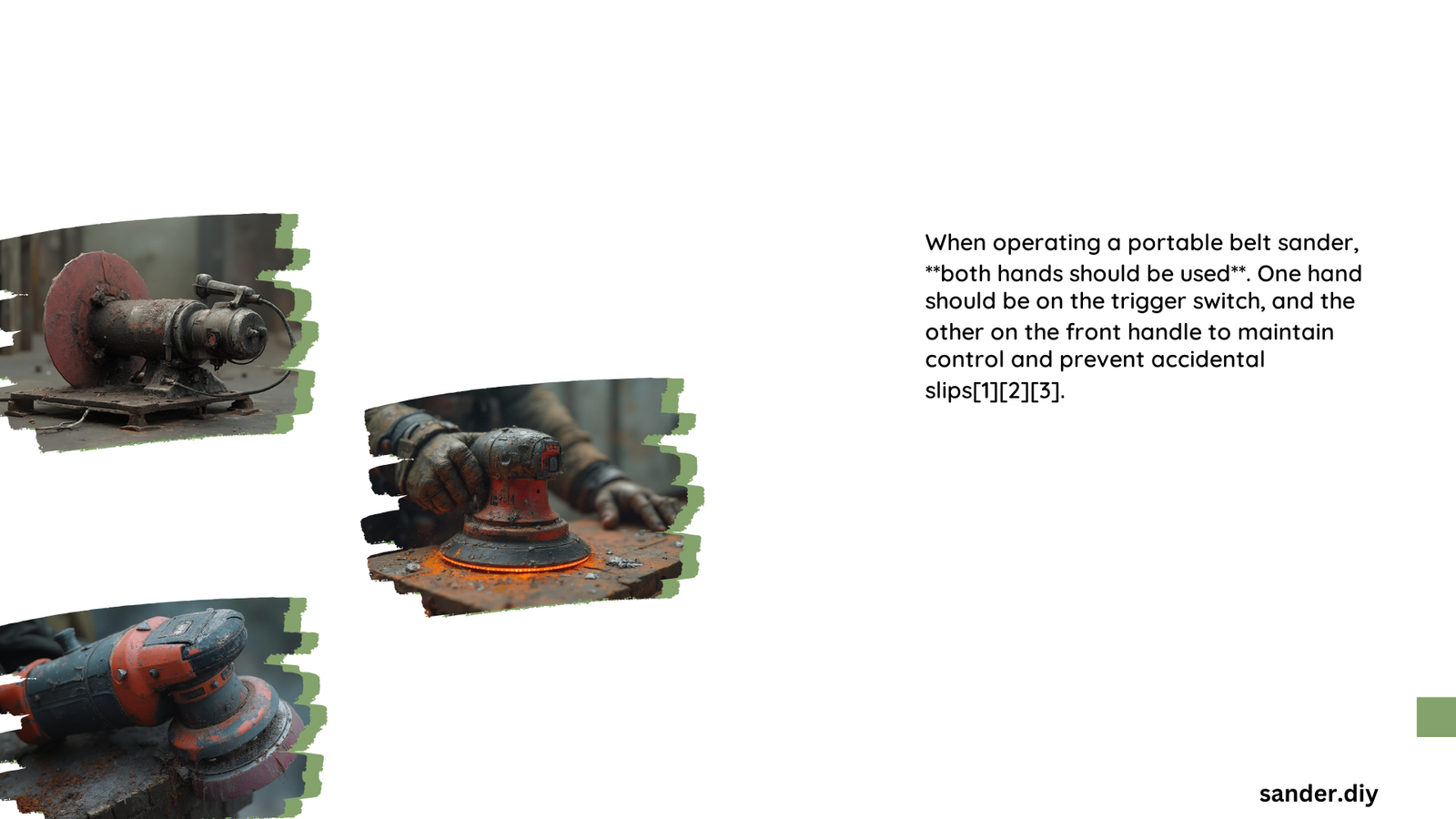Operating a portable belt sander requires strategic hand placement to ensure safety, control, and optimal performance. Woodworkers must understand that both hands play critical roles in managing the tool’s movement, stability, and precision. The left hand provides support and directional guidance, while the right hand controls speed and balance, creating a synchronized approach that minimizes risks and maximizes sanding efficiency.
Why Hand Placement Matters in Belt Sander Operation?
What Are the Primary Hand Roles?
Belt sanders demand a two-handed approach for several crucial reasons:
- Stability Control
- Prevents tool from slipping
- Maintains consistent sanding pressure
-
Reduces potential workplace accidents
-
Precision Management
- Enables smooth, controlled movement
- Helps maintain correct sanding angle
- Prevents unintended wood surface damage
How Should the Left Hand Function?
The left hand serves as the primary stabilization point for the belt sander. Recommended techniques include:
- Positioning on front handle or side grip
- Maintaining a firm but relaxed grip
- Supporting tool’s weight without restricting movement
What Role Does the Right Hand Play?
The right hand acts as the primary control mechanism:
| Hand Position | Function | Key Considerations |
|---|---|---|
| Rear Handle | Speed Control | Maintain balanced pressure |
| Tool Body | Direction Management | Keep sander flat on surface |
| Trigger Area | Power Regulation | Precise start/stop control |
What Are Critical Safety Techniques?
Grip Fundamentals
- Keep hands shoulder-width apart
- Maintain flexible wrist positioning
- Avoid death-grip pressure
Movement Principles
- Move consistently with wood grain
- Apply minimal downward force
- Keep sander in constant motion
What Equipment Enhances Hand Safety?
Recommended protective gear includes:
– Anti-vibration gloves
– Ergonomic handle attachments
– Padded grip extensions
How to Prevent Common Mistakes?
Critical errors to avoid:
– One-handed operation
– Excessive downward pressure
– Ignoring tool weight distribution
– Neglecting hand positioning
What Advanced Techniques Improve Performance?
Professional woodworkers recommend:
– Practice controlled, smooth movements
– Use body weight for consistent pressure
– Develop muscle memory through repetition
– Regularly inspect tool handles and grips
Technical Considerations

Portable belt sanders vary in design, so adaptability is key. Understanding your specific model’s ergonomics helps optimize hand placement and control.
Maintenance Tips
- Clean handles regularly
- Check grip integrity
- Replace worn handle components
- Lubricate moving parts
Conclusion
Mastering hand placement transforms belt sander operation from a potentially dangerous task to a precise, controlled woodworking technique. Continuous practice and awareness are your best tools for safety and efficiency.
Reference:
– Woodworking Safety Guidelines
– Power Tool Handling Techniques
– Professional Woodworking Resources
